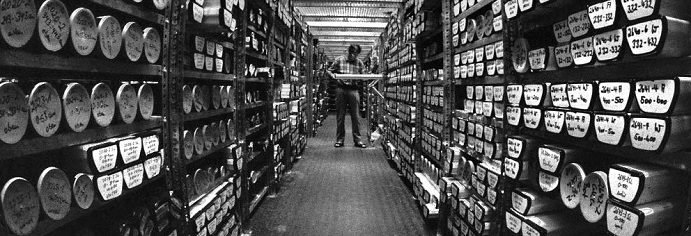Christine Yeats represented the PHA NSW&ACT at an Australian Society of Archivists seminar, Forging Links, on 18 October 2016. This post is based on her presentation at the seminar…
Today, people from across the globe can get online access to an ever-increasing number of records. Does this render obsolete the expert advice and assistance provided by reference archivists in reading rooms? Not according to many professional historians and other researchers. For them, having the archivist on hand to guide them through the maze of indexes, registers and finding aids remains the ideal, regardless of the format of the records being consulted. Nevertheless, digitisation is making it possible to move away from this one-on-one model of service delivery to that of access-on-demand, at a time and place determined by the user.
Both in Australia and overseas, archives and libraries are taking advantage of the increasing efficiency of digitisation to improve service delivery while also reducing costs. Digitisation also provides custodians with the means of implementing large-scale preservation strategies. But it must be remembered that, irrespective of their format, records remain the researchers’ raw materials. This makes it incumbent on archives and libraries to describe the records being digitised so that they can be accessed and used in an informed way.
Users will increasingly expect to be able to discover information online about all the records held in an institution, even the ones that have not been digitised. They will also want to be able to conduct a seamless search of the collection, much like Google. Archives need to be prepared to act on and respond to these expectations.
All this requires getting adequate funding, an ongoing challenge for archives and libraries. Users demanding more and more may not be aware of such challenges; hence the need for a communication strategy to help plan what should be digitised as well as to build goodwill and support for the organisation.
It is also important to communicate to the inexperienced researcher the traps easy access to ever increasing digital content can present. Archivists know that records were not created in a vacuum. Without context ─ who, what, why and when ─ records lose meaning and value, the very thing at risk of being lost as researchers jump head first into an ocean of digital records. In making it easier to access the digital copy, archival description is at risk of being ignored. For example, while researchers do not need to understand the background behind transportation to New South Wales to search the convict indents, without this information the records make little sense. By enriching the research experience through transparent and engaging descriptive information, users will be encouraged to become better informed about the records they are researching.
While the information contained within an archival document should be the same, irrespective of format, paper and digital records are not the same. In replacing the paper-based archival document with a digital surrogate we enter a flexible environment, not constrained by walls and only limited by what material archival repositories can provide online. We can, for example, manipulate an image in ways not possible in the non-digital environment. The ease with which this can be done once a record has left the protected environs of the archival repository is both its strength and its weakness.
The ‘certainty’ of having the inviolate record preserved in the government archives collection is vital. All users need to be assured that the record is the same as the original, in every way. The descriptive information needs to be transparent so that records can be understood and interpreted, in the same way that was possible before they were digitised. That means archival repositories and libraries should ensure that information about their holdings is accessible even if the records themselves have not been digitised.
To realise the potential of digital surrogates, while also preserving the original documents, calls for an alliance of archivists and users to build support for properly funded and carefully managed digitisation projects.

Too true Christine. Remember during the ‘history wars’ some of the combatants gave the impression that written records were ‘sacred’ and not to be questioned, whereas oral testimony was discounted. It really helps to know why and how a government record in particular was created.
Completely agree. The archivist is essential for the both the professional researcher and the keen amateur.
Yes indeed, Christine, that sense of context is so important to understanding the physical files and their series structures. With a teenage son born into the world of Google, I’m also very aware of the assumption that ‘the answer’ is always there to be found. I often find that the gentle and patient steering offered by an archivist opens up vistas that you wouldn’t consider, even in working through a finding aid.